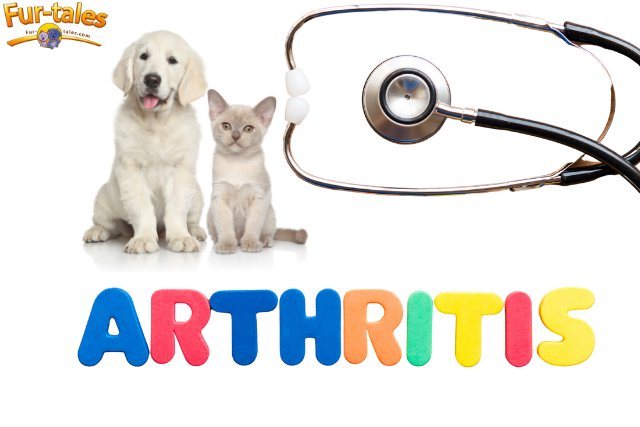
How to Spot Early Signs of Arthritis in Dogs and Cats
As our beloved pets grow older, their bodies begin to change — just like ours. One of the most common health issues affecting senior dogs and cats is arthritis. While many pet owners expect gray hairs and slower movements, they often overlook the subtle early signs of this painful and progressive condition.
Recognizing arthritis in its early stages can make a huge difference. Timely intervention helps manage pain, slow disease progression, and improve quality of life. Whether you have a sprightly dog or a graceful senior cat, understanding what to watch for is essential to being a responsible and compassionate pet parent.
In this article, we will explore everything you need to know about spotting arthritis early in pets, the signs to watch for, and what steps you can take to help your furry friend stay comfortable.
What is Arthritis in Pets?
Arthritis, often referred to as osteoarthritis or degenerative joint disease, is a condition where joints become inflamed and deteriorate over time. This leads to pain, stiffness, and reduced mobility. While arthritis is more common in senior pets, it can affect animals of all ages due to injury, genetics, or developmental issues.
In dogs, arthritis typically affects larger breeds, but smaller dogs are not immune. In cats, arthritis often goes unnoticed because they hide discomfort well and their symptoms can be subtle.
Why Early Detection Matters
The sooner arthritis is detected, the sooner it can be managed. Early intervention can:
Minimize pain and discomfort
Slow the progression of joint damage
Maintain mobility and activity levels
Improve your pet’s overall quality of life
Ignoring or missing early signs can lead to worsening symptoms that significantly impact your pet’s daily life and happiness.
Early Signs of Arthritis in Dogs
Dogs may not always show obvious signs of pain, but there are subtle clues that may indicate arthritis is developing.
Limping or Favoring One Leg
If your dog starts limping, especially after exercise or during cold weather, it could be due to joint pain. You may also notice them favoring one leg when walking or standing.
Stiffness, Especially After Resting
Arthritic dogs often have trouble getting up after lying down. They may move stiffly or slowly, particularly in the morning or after naps.
Reluctance to Exercise or Play
Dogs who once loved chasing balls or going on long walks may become less enthusiastic. A decline in interest in activities they once enjoyed is a red flag.
Difficulty Climbing Stairs or Jumping
If your dog hesitates or struggles to jump on the couch, climb stairs, or get into the car, joint pain may be to blame.
Behavioral Changes
Pain can make even the friendliest dogs irritable or withdrawn. Pay attention if your dog becomes more grumpy, avoids interaction, or shows signs of anxiety.
Licking or Chewing Joints
Some dogs instinctively lick or chew painful areas. This repetitive behavior may be aimed at soothing sore joints.
Early Signs of Arthritis in Cats
Cats are natural masters at hiding pain, which makes arthritis more challenging to detect. Still, there are subtle signs to observe.
Decreased Jumping
One of the most telling signs in cats is reduced jumping ability. If your cat avoids high surfaces they used to frequent or struggles to jump, arthritis may be developing.
Reduced Activity
Arthritic cats may sleep more and show less interest in playing. A decline in energy levels should not be overlooked.
Hesitant or Stiff Movements
Watch how your cat moves around the house. Hesitant climbing, slow movements, or stiffness upon rising can signal joint discomfort.
Changes in Grooming Habits
Cats are meticulous groomers, but arthritis can make self-care painful. You may notice a dull or unkempt coat, especially around hard-to-reach areas like the back and hips.
Litter Box Issues
If your cat starts eliminating outside the litter box, it could be because stepping over the box’s edge is painful.
Changes in Behavior or Mood
Irritability, hiding more often, or avoiding being petted can all be signs of underlying pain.
Risk Factors for Arthritis in Dogs and Cats
While any pet can develop arthritis, some are at higher risk due to:
Age — senior pets are more susceptible
Breed — larger dog breeds and certain cat breeds
Obesity — excess weight puts more strain on joints
Previous injuries — fractures or surgeries can lead to arthritis
Genetic predispositions
Understanding your pet’s risk can help you stay vigilant about spotting early symptoms.
What to Do if You Suspect Arthritis
If you notice any of these signs in your dog or cat, schedule a visit to your veterinarian. Diagnosing arthritis typically involves:
A thorough physical exam
Discussion of your pet’s medical history and behavior changes
X-rays or other imaging to assess joint condition
The earlier arthritis is diagnosed, the more options you have for managing it effectively.
Managing Arthritis in Pets
While arthritis is a lifelong condition, many strategies can help your pet live comfortably.
Weight Management
Keeping your pet at a healthy weight reduces pressure on joints and helps relieve pain.
Regular, Low-Impact Exercise
Gentle activities such as walking or swimming help maintain joint flexibility and muscle strength.
Medications
Your veterinarian may recommend anti-inflammatory medications or pain relievers to help manage discomfort.
Supplements
Glucosamine, chondroitin, and omega-3 fatty acids can support joint health and reduce inflammation.
Comfortable Living Spaces
Provide orthopedic beds, non-slip rugs, and easy access to food, water, and litter boxes to minimize strain on joints.
Physical Therapy
Professional rehabilitation, massage, and acupuncture are additional tools to enhance mobility and comfort.
FAQs About Arthritis in Dogs and Cats
Q1: At what age do pets typically develop arthritis?
Most dogs and cats show signs of arthritis as seniors, usually after age 7, though some may develop it earlier due to injury or genetics.
Q2: Can arthritis in pets be cured?
Arthritis is a degenerative condition and cannot be cured, but early detection and treatment can manage symptoms and improve quality of life.
Q3: Do joint supplements really help?
Yes, joint supplements like glucosamine and omega-3 fatty acids can support joint health and reduce inflammation when used alongside veterinary care.
Q4: Is exercise safe for pets with arthritis?
Yes, but it should be low-impact and consistent. Avoid strenuous activities that may worsen joint pain.
Q5: Can weight loss really make a difference?
Absolutely. Even modest weight loss can significantly reduce stress on your pet’s joints and improve mobility.
Image Designed Using Canva
